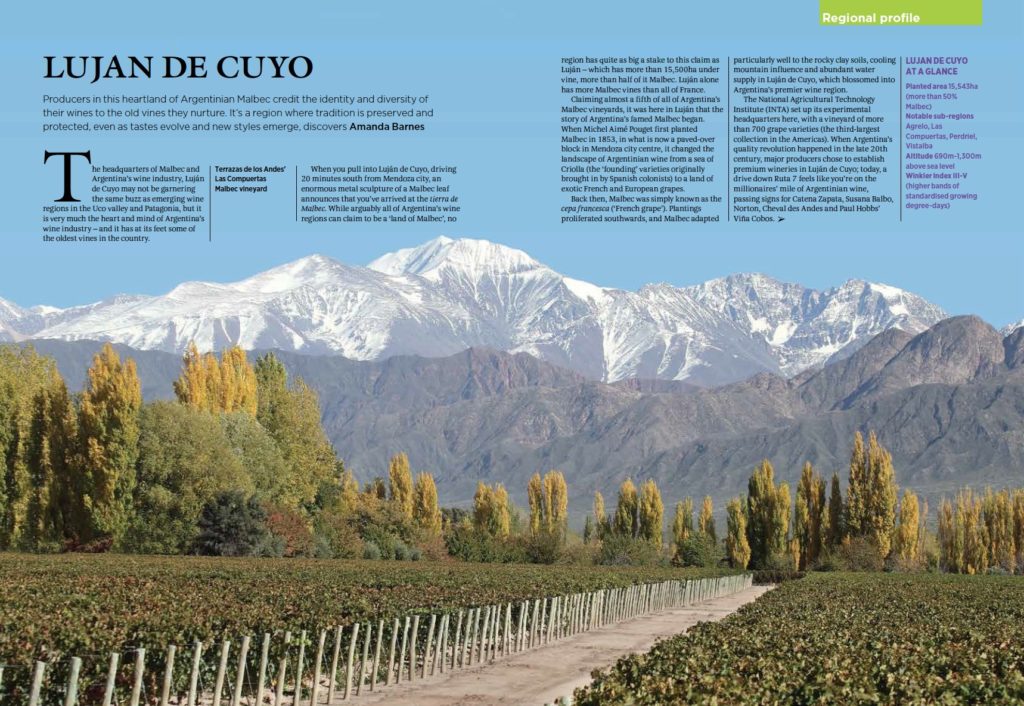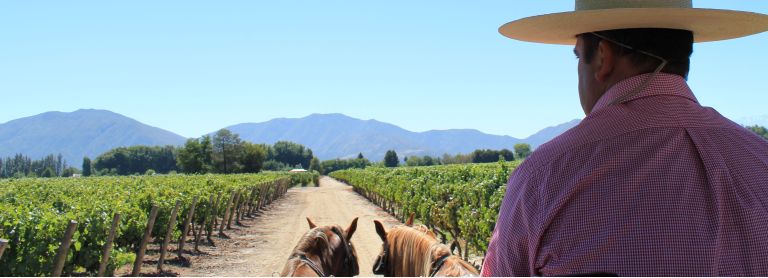Decanter: Focus on Luján de Cuyo

Published in Decanter June 2020 Producers in this heartland of Argentinian Malbec credit the identity and diversity of their wines to the old vines they nurture. It’s a region where tradition is preserved and protected, even as tastes evolve and new styles emerge, discovers Amanda Barnes. The headquarters of Malbec and Argentina’s wine industry, Luján […]
Women in Wine: Argentina

Twenty years ago, it was hard-won to find a female working in the wine industry in Argentina, let alone a female winemaker. But today women are taking their place in the sector and this year’s Argentina Wine Awards boasted an all-female tasting panel, bringing to light the role that many of the fairer sex now […]
The Story of Chilean Malbec

Written for WinesOfChile.org Most people associate Malbec with Chile’s neighbour, Argentina, but little do they know that Chile has a possibly even longer history with the tasty varietal. There are some beautiful, gnarly old vines across the country and research by Pablo Lacoste actually suggests that the first Malbec vines arrived in Chile in […]
Interview with Laura Catena
Laura Catena is an emergency room doctor in San Francisco. She is also a fourth-generation winemaker from a family credited with revolutionizing Argentinian wine – Bodega Catena Zapata’s flagship label, Nicolás Catena Zapata, was the first wine from Argentina to score a Robert Parker 98+. How did you first fall in love with wine? When my father was […]
Cahors: Tierra de Malbec (Espanol)
Todos conocemos la gran historia del Malbec y su exito en la Argentina, pero la biografia de esta variedad en Francia, su lugar de nacimiento, es muy diferente. Amanda Barnes viajo 11.000 kilometros y visito la cuna del cepaje, Cahors, buscando descubrir el verdadero origen. Articulo de El Conocedor, Diciembre 2011 Mientras nuestro Malbec ha […]
Malbec vs Cot
Malbec made Argentine wine famous, but its true French roots are lesser known on this side of the Atlantic. Amanda Barnes goes in search of the original Malbec – in Cahors, France before indulging in a luxury tour of its adopted home here in Mendoza. **Article taken from Wine Republic The French Connection Coming from […]

